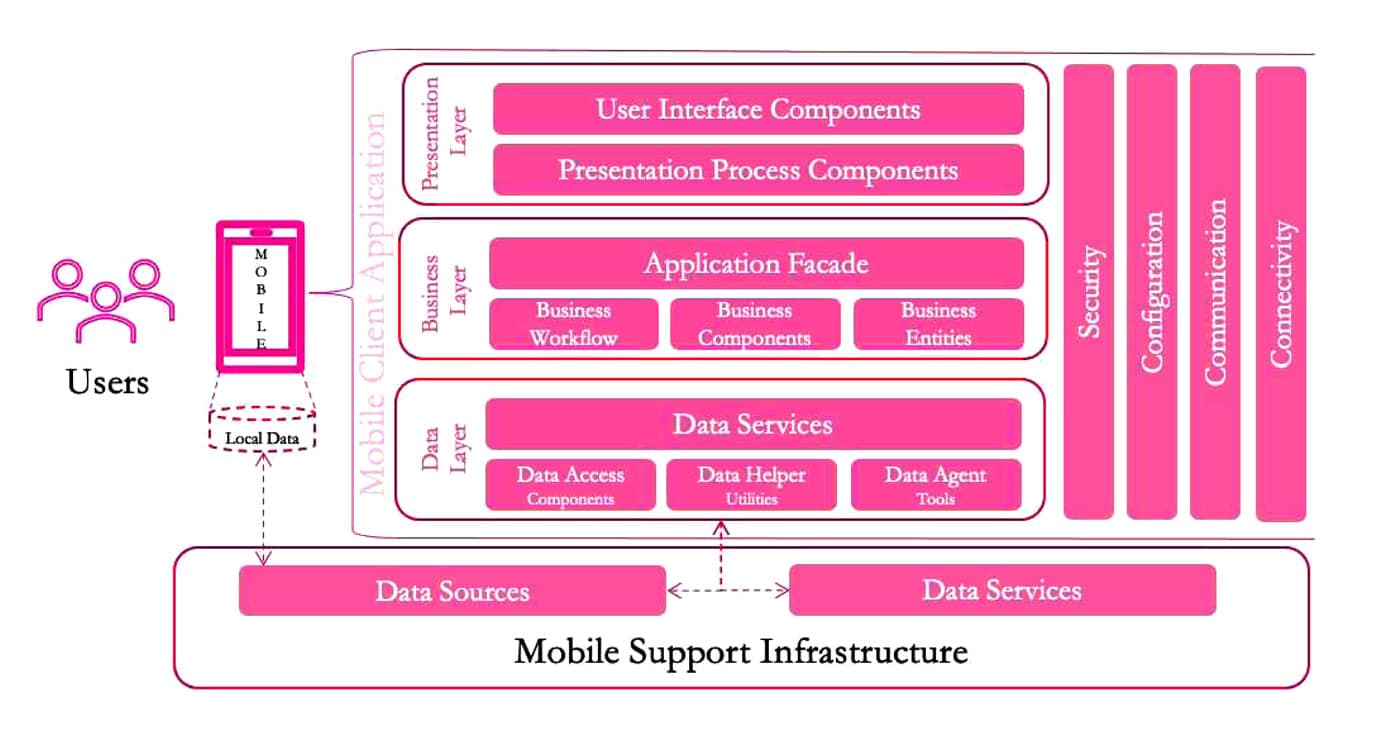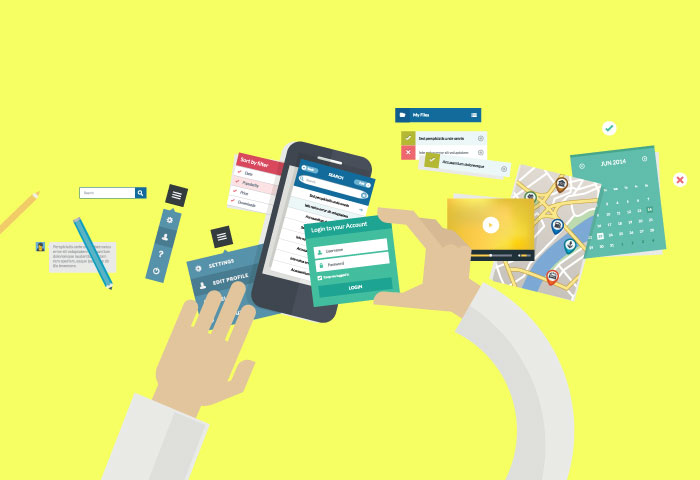The mobile phone is today the most used device in the world of ecommerce, and businesses are trying their best to reach their customers on it. Let’s find out why mobile apps are critical for the success of a modern business.
A mobile application strategy that is driven by business functions and processes can help companies transform today. A technology strategy that analyses the needs of a business, the mobile framework and platform to be used, and readiness of the IT environment plays a critical role in designing this application. A mobile application that is centered on the user right from the conceptualisation stage, and uses workshops, focus groups and demos during development is more likely to be successful.
There are many frameworks, languages, tools, and platforms available for developing mobile apps. Knowing what the organisation’s objectives are with respect to establishing the mobile as a channel for interaction with customers will drive the choice and the approach for their implementation. Developing a mobile application that responds to customer expectations is critical in earning their trust and building a perception of the brand.
Let’s look at the key considerations driving the selection of a framework for a mobile development platform for an enterprise.
| No digital transformation journey enterprises take is complete without including the mobile phone as part of the business strategy. This strategy must focus on planning, implementation, operation, maintenance and support of a mobile app. Connecting with customers through interactive touchpoints and active responses is key in customer engagement. Staying connected with customers creates a channel for communication, and enables feedback that acts as a key input for the company’s brand image. |
Pre-considerations for enterprise mobile app development
As users shift from desktops and laptops to mobile devices and smartphones for all their technology needs, organisations must also do so to stay relevant. However, it’s just not enough to define a mobile strategy, hire a few developers and expect magic to happen. There is a lot more that needs to be done prior to successfully transitioning into a customer-centric mobile first technology strategy.
- Market research helps to understand exactly what the requirements are, and what the competition is doing with respect to their strengths and weaknesses. Most importantly, it’s important to learn end user expectations so that costly mistakes are avoided.
- Choosing the right framework and platform for mobile app development across Android and iOS. This selection will impact the adaptability of the minimum viable product and the initial effort it will take to get it going. In the long run, the framework and platforms will have a high impact on the flexibility and security of the mobile app.
- Target audience that will use the mobile app – it’s critical to get the audience expectations and requirements right. Aligning application goals with customers’ needs is the most critical objective of an enterprise mobile app.
- User interface and user experience will define how the user sees the app. If users don’t like the UI and UX of the app, irrespective of its content, it will fail. The initial phases of application development need to focus heavily on creating wireframes of the screens along with mock visualisations. It would be a good idea to have a focus group lead feedback into the interface design.
- User security and data privacy are extremely important, as users will be trusting the app by feeding in sensitive data. It is the organisation’s responsibility to secure and protect this data by setting up appropriate privacy policies, and adopting safe design principles as well as development and deployment practices.
- Rollout planning and marketing strategy alignment is extremely critical for a successful launch of the mobile application. There are numerous instances of heavily marketed products failing due to poor rollout planning. Towards the end of the mobile app development phase, testing the application for its performance, usability and stability is critical. It isn’t a bad idea to roll the app out slowly by allowing a small number of users into the application, collecting the feedback on the UI and UX, and fine tuning the application’s performance prior to the big launch.
| Top mobile app development frameworks |
| Apache Cordova |
| Flutter |
| Ionic |
| jQuery Mobile |
| Native Scripts |
| Onsen UI |
| React Native |
| Sencha Ext JS |
| Swiftic |
| Xamarin |
Enterprise mobile app development frameworks
There are many proven mobile application development frameworks. Selection of the right framework requires in-depth study, strategy development, comprehensive planning and an understanding of the current mobile environment.
There are native, web and hybrid mobile apps available across Android, iOS and Windows that support multiple devices — from mobile phones and tablets to desktops and laptops.
- Native app development approach is expensive, and leads to a significant number of duplicate efforts across multiple operating systems like iOS and Android, at the least. Native apps suffer from customer engagement challenges due to siloed channels and devices.
- Web apps are distributed via the web using the browser interface and work well for many business needs where static content with limited interactive experience is expected. Sometimes these apps are used as a stop gap arrangement, while a rich mobile app is being developed for greater customisation.
- Hybrid apps are targeted primarily for smartphones. They have a rich user interface and interactive experience, complemented with the ability to store local data for use when the internet service is patchy or unavailable.
Popular mobile app development frameworks have robust features that address the implementation challenges, allowing organisations to focus on UI and UX with data integration for developing appropriate content. Selection of the appropriate framework for an enterprise would depend on the core features that are critical for its mobile app development and maintenance. Apart from performance, ease of use and cross-platform development ability, functionalities that must be considered while selecting a framework are UI consistency, third party integration compatibility, ability to work with other frameworks, data analytics and cost efficiency. Lastly, the language chosen to develop the mobile app, like Python, Java, Flutter, React Native, Swift, Kotlin, etc, will influence the selection of the framework and platform.

It’s ultimately up to the organisation to choose the framework that it deems will fit its current and future needs from the business, technology, operations and support perspectives. Each framework offers its own unique set of benefits, and the organisation can make an educated assessment of the right framework for mobile app development, depending upon its priorities and business needs
Enterprise mobile app reference architecture
Finally, it is important to understand the ecosystem in which the mobile app must be developed and deployed. Careful consideration of the mobile application’s presentation layer, business layer and data layer components, overall application security, configuration, communication, and connectivity expectations will ensure a modularised mobile app that can be easily maintained and evolves with the ever changing world of technology. Applying industry best practices to identify critical use cases with their business requirements, data and governance, identity and personalisation, design, management, and endpoint connectivity will help create a reference architecture. This architecture will act like a central focal point bringing all stakeholders together under one mission — successful development of a mobile application that meets an organisation’s business needs.
Mobile data analytics
Better business insights are generated with the help of real-time analytics of historical and streaming data. The data platform is used as a single source of truth that users across the organisation have access to. Such an objective requires planning right from the design phase of the mobile application, removing redundant tasks for frontline customer support, thus enabling a smart app that responds to customers.
At the end of the day, a mobile app is an enterprise asset that will help increase its reach with customers. While building streaming and time series integrated analytics for the mobile application, organisations can address the legacy systems challenges of stale data with fresh intelligence in real-time. Detailed planning in the development process will help build long-lasting trust with prospects and customers alike.












































































